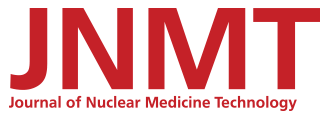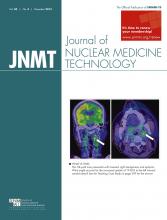Aaron T. Scott, CNMT, NMAA, FSNMMI-TS
As you know, these past 2 months have been flooded by discussion surrounding the merger of the American Board of Nuclear Medicine (ABNM) and the American Board of Radiology (ABR) and subsequent dissolution of ABNM. Thank you to those who provided feedback on the ABNM/ABR merger. All your responses were reviewed, and they helped in developing a final position for the Section. This important discussion concluded with SNMMI sending a final position statement to ABNM and ABR opposing the merger but acknowledging the importance of the underlying reasons for the proposal related to the current challenges facing nuclear medicine training and the need for this training to ensure value-based quality nuclear medicine practice (www.snmmi.final-position-statement.pdf).
By the time this article is published, the final decision from ABR will have been announced and the day-to-day activities of our colleagues will continue. However, I believe that the important discussions and questions brought about by this proposal have forever changed the field of nuclear medicine.
As a result of this proposal, SNMMI has vowed to form a task force to assess the landscape and to work with all relevant stakeholders (including but not limited to ABR, ABNM, the American College of Nuclear Medicine, the Society of Chairs of Academic Radiology Departments, Residency Review Committees, the American College of Radiology, and the Radiological Society of North America) to advise SNMMI on how to address this important challenge. Although it may seem as though this proposal would not have a direct effect on technologists, their jobs, or their future, I cannot help but think that we, as well as our physician colleagues, are most definitely indirectly and somewhat directly involved in whatever changes may come.
All too often, we focus on what we need to do or can do to benefit ourselves. Yet, collaboration and relationship building are the cornerstone of any successful business, partnership, or relationship. Why, then, are we not using these devices to build a stronger future for nuclear medicine and molecular imaging? As described by Glenn H. Tecker, founder of Tecker International, a consultant firm dedicated to working with associations, “Successful associations need the deep roots of a collaborative leadership culture, the flexibility to reach toward new opportunities, and a coherent strategy to direct their efforts over time.” (www.asaecenter.org/sustaining-association-success-that-matters).
Although Mr. Tecker was focused on associations, I think his advice holds true for nuclear medicine as a whole. We are in the middle of field-changing advances: in instrumentation (PET/MR), in therapies (Xofigo; Bayer HealthCare), and in imaging agents (18F-florbetaben, florbetapir, flutemetamol, and 68Ga). These advances have the ability to reinvigorate the field to a degree we have not seen in decades. However, none of these advances will come to their true fruition without collaboration and relationship building—across modalities, across inpatient and outpatient facilities, and across states and countries.
Within the Technologist Section, we have been working to refine our relationship with many of our liaison and international organizations. SNMMI-TS has focused on collaboration and strategic development as it works to align similar goals with similar organizations. As members of an organization dedicated to improving human health by advancing technology and professionals in nuclear medicine and molecular imaging, it is our duty to ensure that we are engaging with other entities within the field. Through these collaborative efforts, SNMMI-TS has been able to accomplish several extraordinary achievements over the past few years. Some of these accomplishments include joint efforts with the European Association of Nuclear Medicine Technologist Section on the technologist guidebook series, a new best-abstract exchange program with the Australian and New Zealand Society of Nuclear Medicine, a joint quality-in-cardiology session with the American Society of Nuclear Cardiology during the SNMMI 2015 annual meeting, a new grant program with the American Registry of Radiologic Technologists, collaboration on state licensure issues with the American Society of Radiologic Technologists, and continued representation on the Joint Review Committee on Educational Programs in Nuclear Medicine Technology, the Nuclear Medicine Technology Certification Board, and the Intersocietal Accreditation Commission. In addition, perhaps our most notable collaboration this past year were the comments sent to the Joint Review Commission acknowledging the exceptional training and credentialing of nuclear medicine technologists.
Our collaboration with these organizations and with our physician, scientist, pharmacist, and student colleagues will ensure the position of SNMMI-TS as a leader in the field and an advocate for the profession. Your leadership and collaboration—within your institution and among fellow members of your chapter and local groups—will enhance opportunities for change and advancement in nuclear medicine and molecular imaging within health care.
As we embark on this complicated and seemingly ominous future, I am optimistic about our field and empowered by the individuals serving as technologists. As SNMMI leaders create the new task force, the Technologist Section will work in concert with them to continue to seek collaboration and strategic opportunities that will advance nuclear medicine technologists and prepare them for the future ahead.








